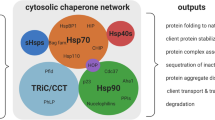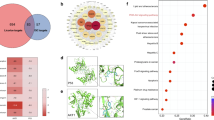Abstract
Mifepristone is a synthetic progesterone antagonist that is being used widely for the treatment of various conditions such as endometriosis, glaucoma, meningiomas, breast, ovarian and prostate cancer, as well as for research purposes, in the conditional induction of gene expression by using artificial plasmid-based systems. Here, we report that exposure of A549 human lung cancer cells to mifepristone caused an atypical induction of the cellular unfolded protein response, as evidenced by the time-dependent stimulation of RNA levels of the chaperone Grp94 and PDIa, as well as the endoplasmic reticulum stress-associated receptors ATF6, PERK and eIF2 but not of their downstream target, transcription factor ATF4. This profile was very different from that of progesterone, which at the same dose as mifepristone, failed to induce all of the ER-stress-related genes examined, apart from PERK. Furthermore, XBP1, a transcription factor that is regulated predominantly by alternative splicing by the IRE1 receptor, remains unspliced and therefore inactive either by mifepristone or progesterone treatment. Finally, the pro-apoptotic molecules CHOP and BIM are only induced in the presence of tunicamycin in the culture medium. Tunicamycin, the most commonly used pharmacologic inducer of ER stress that triggers the canonical ER stress response, was used for comparison purposes. Our results suggest that mifepristone can elicit an atypical ER stress response when used at different doses and for different time points. The subsequent induction of UPR should be taken into consideration when this agent is being used either for therapeutic or for experimental uses.






Similar content being viewed by others
References
M. Boyce, J. Yuan, Cellular response to endoplasmic reticulum stress: a matter of life or death. Cell Death Differ. 13, 363–373 (2006)
V.M. Hermann, Biophysical characterization of ERp29. J. Biol. Chem. 280, 13529–13537 (2005)
G. Hussain, K.V.A. Ramaiah, Endoplasmic reticulum: stress, signaling and apoptosis. Curr. Sci. 93, 1684–1696 (2007)
Ishibashi et al., Progesterone receptor in non- small cell lung cancer—a potent prognostic factor and possible target for endocrine therapy. Cancer Res. 65, 6450–6458 (2005)
E. Jorgensen, A. Stinson, L. Shan, J. Yang, D. Gietl, A.P. Albino, Cigarette smoke induces endoplasmic reticulum stress and the unfolded protein response in normal and malignant human lung cells. BMC Cancer 8, 229 (2008)
R.J. Kaufman, Stress signaling from the lumen of the endoplasmic reticulum: coordination of gene transcriptional and translational controls. Genes Dev. 13, 1211–1233 (1999)
I. Kim, W. Xu, J.C. Reed, Cell death and endoplasmic reticulum stress: disease relevance and therapeutic opportunities. Nat. Rev. Drug Discov. 7, 1013–1030 (2008)
D. Lafkas, G. Trimis, A.G. Papavassiliou, H. Kiaris, P53 mutations in stromal fibroblasts sensitize tumors against chemotherapy. Int. J. Cancer 123, 967–971 (2008)
A.-H. Lee, N.N. Iwakoshi, L.H. Glimcher, XBP1 regulates a subset of endoplasmic reticulum resident chaperone genes in the unfolded protein response. Mol. Cell. Biol. 23, 7448–7459 (2003)
Lin et al., IRE1 signaling affects cell fate during the unfolded protein response. Science 318, 944–949 (2007)
J.D. Malhotra, R.J. Kaufman, The Endoplasmic reticulum and the unfolded protein response. Semin Cell Dev. Biol. 18, 716–731 (2007)
S.J. Marciniak, D. Ron, Endoplasmic reticulum stress signaling in disease. Physiol. Rev. 86, 1133–1149 (2006)
Mkrtchian et al., A stress-inducible rat liver endoplasmic reticulum protein, ERp29. Eur. J. Biochem. 251, 304–313 (1998)
Mkrtchian et al., ERp29, an endoplasmic reticulum secretion factor is involved in the growth of breast tumor xenografts. Mol. Carcinog. 47, 886–892 (2008)
S. Nair, C. Xu, G. Shen, V. Hebbar, A. Gopalakrishnan, R. Hu, M.R. Jain, C. Liew, J.Y. Chan, A.N. Kong, Toxicogenomics of endoplasmic reticulum stress inducer tunicamycin in the small intestine and Liver of Nrf2 Knockout and C57BL/6J Mice. Toxicol. Lett. 168(1), 21–39 (2007)
E.S.W. Ngan, K. Schillinger, F. DeMayo, S.W. Tsai, The Mifepristone inducible gene regulatory system in mouse models of disease and gene therapy. Semin Cell Dev. Biol. 13, 143–149 (2002)
S. Oyadomari, M. Mori, Roles of CHOP/GADD153 in endoplasmic reticulum stress. Cell Death Differ. 11, 381–389 (2004)
R.V. Rao, H.M. Ellerby, D.E. Bredesen, Coupling endoplasmic reticulum stress to the cell death program. Cell Death Differ. 11, 372–380 (2004)
D.T. Rutkowski, R.J. Kaufman, That which does not kill me makes me stronger: adapting to chronic ER stress. Trends Biochem. Sci. 32(10), 469–476 (2007)
S.D. Shnyder, M.J. Hubbard, ERp29 is a ubiquitous resident of the endoplasmic reticulum with a distinct role in secretory protein production. J. Hist. Cytochem. 50, 557–566 (2002)
E. Szegezdi, S.E. Logue, A.M. Gorman, A. Samali, Mediators of endoplasmic reticulum stress-induced apoptosis. EMBO Rep. 7, 880–885 (2006)
Y. Wang, B.W. O’Malley Jr, S.Y. Tsai, B.W. O’Malley, A regulatory system for use in gene transfer. Proc. Natl. Acad. Sci. USA 91, 8180–8184 (1994)
J. Wu, R.J. Kaufman, From acute ER stress to physiological roles of the Unfolded Protein Response. Cell Death Differ. 13, 374–384 (2006)
Q. Xu, N. Ohara, J. Liu, K. Nakabayashi, K. DeManno, K. Chwalisz, S. Yoshida, T. Maruo, Selective progesterone receptor modulator asoprisnil induces endoplasmic reticulum stress in cultured human uterine leiomyoma cells. Am. J. Physiol Endocrinol. Metab. 293, E1002–E1011 (2007)
Yamamoto et al., Transcriptional induction of mammalian ER quality control proteins is mediated by single or combined action of ATF6a and XBP1. Dev. Cell. 13, 365–376 (2007)
K. Zhang, R.J. Kaufman, Signaling the unfolded protein response from the endoplasmic reticulum. J. Biol. Chem. 279, 25935–25938 (2004)
Acknowledgments
This study was supported by grants from the Greek Endocrine Society and the University of Athens (Kapodistrias).
Author information
Authors and Affiliations
Corresponding author
Rights and permissions
About this article
Cite this article
Dioufa, N., Kassi, E., Papavassiliou, A.G. et al. Atypical induction of the unfolded protein response by mifepristone. Endocr 38, 167–173 (2010). https://doi.org/10.1007/s12020-010-9362-0
Received:
Accepted:
Published:
Issue Date:
DOI: https://doi.org/10.1007/s12020-010-9362-0




